Are you planning a trip to Hanoi and wondering what to explore beyond the iconic Ho Chi Minh Mausoleum? The Mausoleum complex offers a captivating journey through Vietnamese history and culture. SIXT.VN is here to guide you through this essential Hanoi destination, revealing the treasures that await within. Discover historical insights, architectural marvels, and serene landscapes, all in one place.
1. What Is the Ho Chi Minh Mausoleum Complex?
The Ho Chi Minh Mausoleum Complex is a significant historical and cultural site in Hanoi, Vietnam, centered around the final resting place of Ho Chi Minh, the first president of North Vietnam. However, the complex includes more than just the mausoleum. It also comprises several important landmarks that offer insights into Ho Chi Minh’s life, his political career, and Vietnamese history. These include the Ho Chi Minh Museum, the Presidential Palace Historical Site, Ho Chi Minh’s Stilt House, and the One Pillar Pagoda. Together, these sites provide a comprehensive picture of a pivotal figure in Vietnamese history and culture.
1.1 What Is the Historical Significance of the Complex?
The Ho Chi Minh Mausoleum Complex holds immense historical significance as it commemorates the life and legacy of Ho Chi Minh, a pivotal figure in Vietnam’s struggle for independence. The complex serves as a tribute to his leadership and contributions to the nation.
1.2 What Can Visitors Expect to See?
Visitors can expect to see a range of historical sites, including the Ho Chi Minh Mausoleum, where Ho Chi Minh’s embalmed body is preserved. They can also explore the Ho Chi Minh Museum, which showcases artifacts and exhibits related to his life and political activities. The Presidential Palace Historical Site offers insights into the governance during Ho Chi Minh’s era, while the Stilt House provides a glimpse into his humble lifestyle. Additionally, visitors can admire the unique architecture of the One Pillar Pagoda, a historic temple located within the complex.
2. Why Visit the Ho Chi Minh Mausoleum?
Visiting the Ho Chi Minh Mausoleum is a significant cultural and historical experience in Hanoi, Vietnam. It offers a unique opportunity to pay respects to Ho Chi Minh, the iconic leader of the Vietnamese revolution and the first president of North Vietnam. The mausoleum serves as a place of reverence and remembrance for the Vietnamese people and provides visitors with insights into the country’s history and political ideology.
2.1 What Is the Protocol for Visiting the Mausoleum?
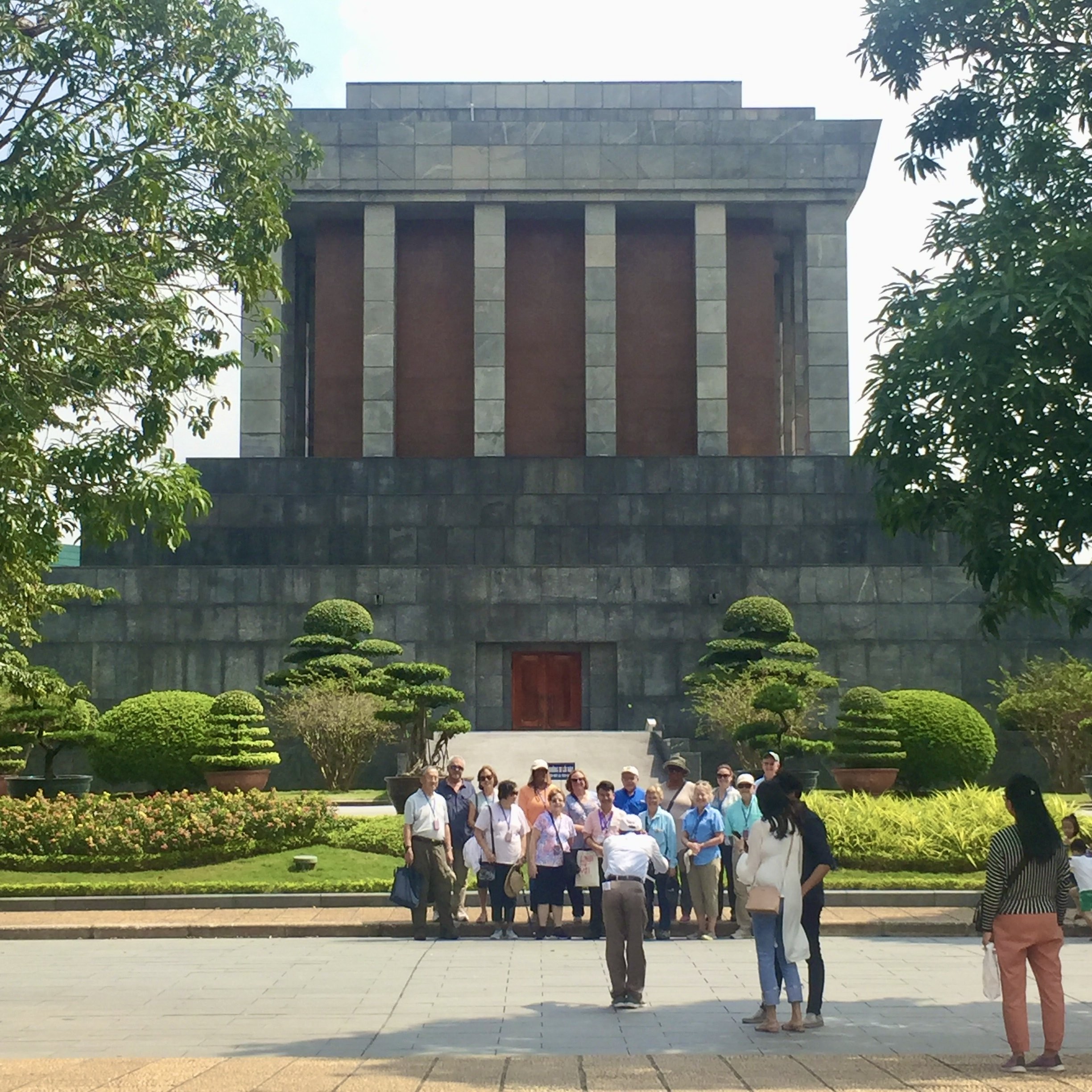 Ho Chi Minh Mausoleum in Hanoi, Vietnam
Ho Chi Minh Mausoleum in Hanoi, Vietnam
Visiting the Ho Chi Minh Mausoleum requires adhering to a strict protocol to maintain the solemnity of the site. Visitors are expected to dress respectfully, covering their shoulders and knees. Revealing clothing is not allowed. Hats and sunglasses must be removed before entering the mausoleum. Photography and videography are strictly prohibited inside the mausoleum. Visitors should remain silent and refrain from talking or making noise while inside. Following these guidelines ensures a respectful and orderly visit to this important historical site.
2.2 When Is the Best Time to Visit the Mausoleum?
The best time to visit the Ho Chi Minh Mausoleum is typically in the morning, as it tends to be less crowded and the weather is cooler. The mausoleum is open to the public on certain days of the week, usually from Tuesday to Thursday and on weekends, but it’s essential to check the official schedule beforehand, as it may vary due to maintenance or special events. Arriving early in the morning not only allows you to avoid long queues but also provides a more peaceful and respectful experience.
2.3 What Are the Opening Hours of the Mausoleum?
The Ho Chi Minh Mausoleum is generally open from 8:00 AM to 11:00 AM. However, the opening days are limited to mornings from Tuesday to Thursday and Saturdays and Sundays. It is closed on Mondays and Fridays. Additionally, the mausoleum is typically closed for a few months each year for maintenance, usually around October to December, when Ho Chi Minh’s body is taken to Russia for preservation work. It’s advisable to check the official website or local sources for the most up-to-date and accurate information before planning your visit to avoid disappointment.
2.4 How Long Does It Take to Visit the Mausoleum?
The time it takes to visit the Ho Chi Minh Mausoleum can vary depending on the crowds and the time of year. On average, the visit itself, which involves walking through the mausoleum, can take around 30 minutes to an hour. However, it’s essential to factor in the time spent waiting in line to enter, which can sometimes be lengthy, especially during peak tourist season or on weekends. Therefore, it’s wise to allocate at least 2 to 3 hours for the entire experience, including waiting time and the actual visit. Arriving early in the morning can help minimize the waiting time and make the visit more efficient.
3. What Is the Ho Chi Minh Museum?
The Ho Chi Minh Museum in Hanoi is a museum dedicated to the life and legacy of Ho Chi Minh, the founder of modern Vietnam. It showcases artifacts, documents, and exhibits that chronicle his early life, political career, and contributions to Vietnam’s independence movement.
3.1 What Kind of Exhibits Are on Display?
The Ho Chi Minh Museum features a diverse range of exhibits that shed light on Ho Chi Minh’s life and political activities. Visitors can explore displays of personal artifacts, such as his clothing, living quarters, and personal belongings. The museum also houses historical documents, photographs, and memorabilia related to Vietnam’s struggle for independence. These exhibits provide valuable insights into Ho Chi Minh’s role in shaping the nation’s history.
3.2 What Is the Architectural Style of the Museum?
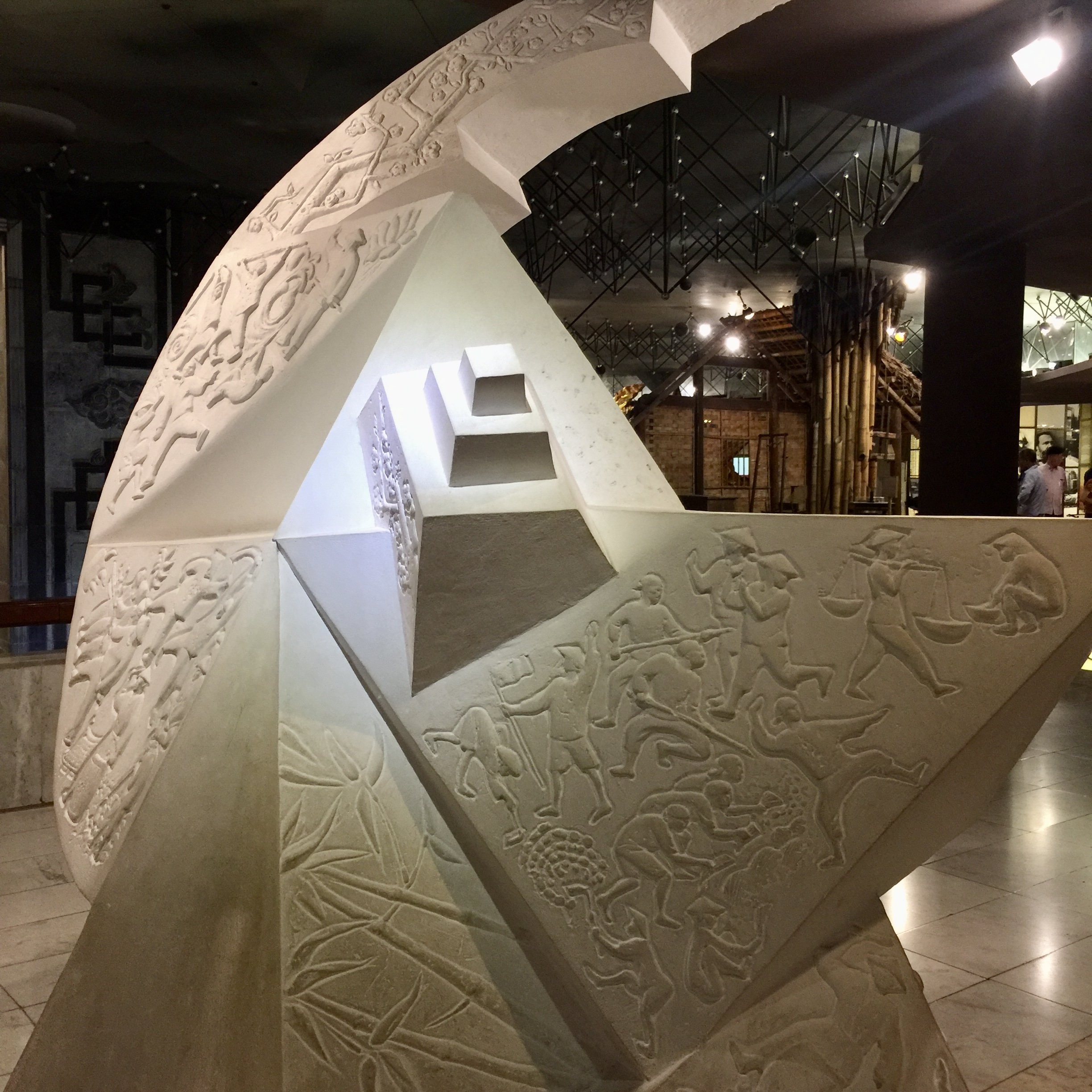 Architectural style of the Ho Chi Minh Museum
Architectural style of the Ho Chi Minh Museum
The Ho Chi Minh Museum is known for its distinctive architectural style, which blends modern design with Vietnamese cultural elements. The museum’s exterior features a grand, imposing structure with clean lines and geometric shapes. Inside, the exhibition spaces are thoughtfully designed to create an engaging and informative experience for visitors. The architectural style reflects both the modernity of Vietnam and its rich cultural heritage, making the museum a unique landmark in Hanoi.
3.3 How Does the Museum Showcase Ho Chi Minh’s Life?
The Ho Chi Minh Museum showcases Ho Chi Minh’s life through a comprehensive collection of artifacts, documents, and interactive exhibits. It chronicles his early life, education, and his travels around the world, highlighting the influences that shaped his political ideology. The museum also delves into his role in leading Vietnam’s struggle for independence, his contributions to the establishment of the Democratic Republic of Vietnam, and his vision for the nation’s future. Through these exhibits, visitors gain a deep understanding of Ho Chi Minh’s life, values, and his enduring impact on Vietnam.
3.4 How Long Should You Spend at the Museum?
The amount of time you should spend at the Ho Chi Minh Museum can vary depending on your level of interest and how deeply you want to explore the exhibits. On average, most visitors spend around 2 to 3 hours at the museum to get a comprehensive understanding of Ho Chi Minh’s life and legacy. If you’re particularly interested in Vietnamese history or want to delve into the details of Ho Chi Minh’s political career, you might consider allocating more time. However, if you have limited time, you can still get a good overview of the key exhibits within a shorter visit of 1 to 2 hours.
4. What Is Ho Chi Minh’s Stilt House?
Ho Chi Minh’s Stilt House is a modest two-story wooden house located within the Presidential Palace Historical Site in Hanoi. It served as Ho Chi Minh’s residence and workplace from 1958 until his death in 1969.
4.1 Why Did Ho Chi Minh Choose to Live in a Stilt House?
Ho Chi Minh chose to live in a stilt house as a symbol of his simple and humble lifestyle, reflecting his commitment to the Vietnamese people. Rejecting the opulence of the Presidential Palace, he opted for a traditional stilt house similar to those found in rural Vietnamese villages. This choice underscored his desire to remain connected to the common people and to lead by example, emphasizing the values of simplicity, frugality, and service to the nation.
4.2 What Is the Architecture of the Stilt House?
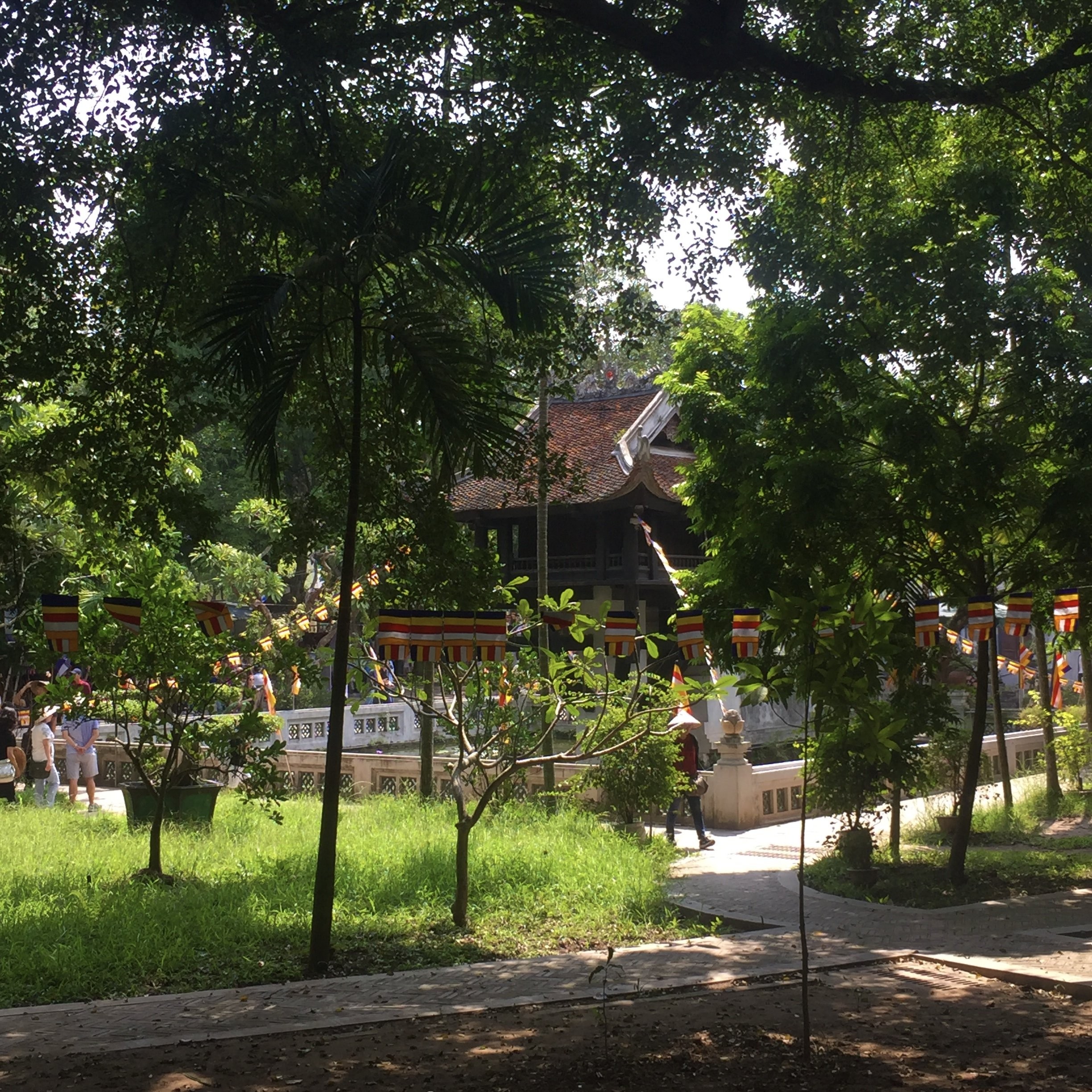 The architecture of Ho Chi Minh's Stilt House in Hanoi
The architecture of Ho Chi Minh's Stilt House in Hanoi
The architecture of Ho Chi Minh’s Stilt House is characterized by its traditional Vietnamese design, featuring a wooden structure elevated on stilts. The house has two stories, with the upper level serving as living quarters and the lower level used for meetings and work. The design reflects the simplicity and practicality of rural Vietnamese homes, with an emphasis on natural materials and open spaces. The stilt construction provides ventilation and protection from floods and pests, making it a functional and culturally significant architectural style.
4.3 How Is the Stilt House Preserved?
The Stilt House is meticulously preserved as a historical site, maintained in its original condition as it was during Ho Chi Minh’s time. The house is carefully protected from the elements, and access is restricted to preserve its structural integrity. Visitors are allowed to view the house from the outside, and guided tours provide insights into Ho Chi Minh’s life and the significance of the stilt house in Vietnamese history. The preservation efforts ensure that future generations can appreciate and learn from this important cultural landmark.
4.4 What Items Are on Display Inside the Stilt House?
Inside the Stilt House, visitors can view a range of items that offer insights into Ho Chi Minh’s daily life and work. These include his simple furnishings, such as a bed, desk, and chairs, as well as personal belongings like books, writing materials, and clothing. The house is arranged to reflect how it looked when Ho Chi Minh lived and worked there, providing a glimpse into his modest lifestyle and dedication to his country.
5. What Is the Significance of the One Pillar Pagoda?
The One Pillar Pagoda, also known as Chùa Một Cột, is a historic Buddhist temple in Hanoi, Vietnam, renowned for its unique architecture and cultural significance. The pagoda is constructed on a single stone pillar rising from a lotus pond, symbolizing purity and enlightenment.
5.1 What Is the History Behind the Pagoda?
The One Pillar Pagoda has a rich history dating back to the Lý dynasty in the 11th century. According to legend, Emperor Lý Thái Tông, who was childless, dreamed of the Bodhisattva Avalokiteśvara sitting on a lotus flower and handing him a son. Inspired by this dream, the emperor built the pagoda in 1049, modeling it after the lotus flower. The pagoda has been a symbol of fertility and spiritual enlightenment for centuries, attracting worshippers and visitors seeking blessings and good fortune.
5.2 What Is the Symbolism Behind the Single Pillar Design?
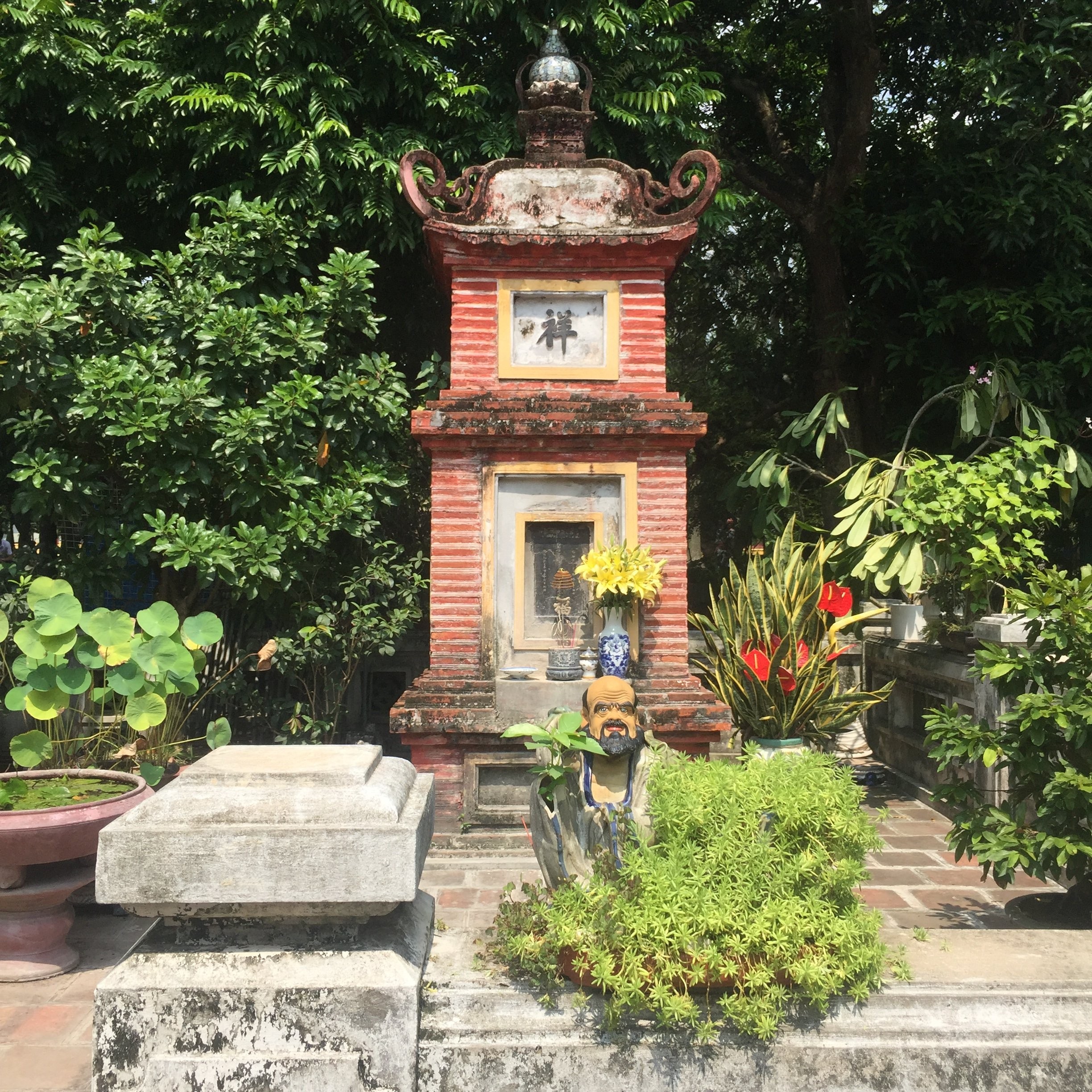 Symbolism behind the design of the One Pillar Pagoda
Symbolism behind the design of the One Pillar Pagoda
The single pillar design of the One Pillar Pagoda carries profound symbolism within Buddhism and Vietnamese culture. The pillar represents the central axis of the universe, symbolizing stability, balance, and enlightenment. The lotus flower, which the pagoda is designed to resemble, is a symbol of purity, spiritual awakening, and divine birth in Buddhist teachings. The combination of the pillar and lotus creates a powerful image of spiritual transcendence and the potential for enlightenment in the midst of the material world.
5.3 How Has the Pagoda Been Rebuilt Over Time?
The One Pillar Pagoda has undergone several reconstructions and renovations throughout its history due to natural disasters and conflicts. The original structure, built in the 11th century, was destroyed during the French colonial period in 1954. It was rebuilt in 1955, preserving its iconic design and cultural significance. Despite the reconstructions, the pagoda has maintained its original essence and continues to be a revered symbol of Vietnamese culture and spirituality.
5.4 Can You Go Inside the One Pillar Pagoda?
Yes, visitors can go inside the One Pillar Pagoda. Inside, there is a shrine dedicated to Avalokiteśvara, the Bodhisattva of compassion, where visitors can offer prayers and pay their respects. The interior is modestly decorated, maintaining a serene and spiritual atmosphere. Entering the pagoda allows visitors to experience the sacredness of the site and appreciate its cultural and historical significance.
6. What to Know Before Visiting the Ho Chi Minh Mausoleum Complex?
Before visiting the Ho Chi Minh Mausoleum Complex, it’s essential to be aware of certain guidelines and practical information to ensure a respectful and enjoyable experience.
6.1 What Are the Dress Code Requirements?
The dress code for visiting the Ho Chi Minh Mausoleum Complex is strict and requires visitors to dress modestly and respectfully. Both men and women should wear clothing that covers their shoulders and knees. Shorts, sleeveless tops, and revealing attire are not allowed. Hats and sunglasses must be removed before entering the mausoleum. Adhering to these dress code requirements shows respect for Ho Chi Minh and the cultural significance of the site.
6.2 Are There Any Restrictions on Photography?
Yes, there are strict restrictions on photography within the Ho Chi Minh Mausoleum Complex, particularly inside the mausoleum itself. Photography and videography are strictly prohibited inside the mausoleum to maintain the solemnity of the site and protect the preserved body of Ho Chi Minh. However, photography may be allowed in certain outdoor areas of the complex, such as the gardens and surrounding grounds. It’s essential to follow the posted guidelines and instructions from the site’s staff regarding photography.
6.3 Is There a Fee to Enter the Complex?
Entrance to the Ho Chi Minh Mausoleum is free, but there is a fee to enter the Ho Chi Minh Museum. However, there may be fees for guided tours or other services within the complex. It’s advisable to check the official website or inquire at the entrance for the most accurate and up-to-date information on entrance fees and other costs associated with visiting the complex.
6.4 What Is the Best Way to Get to the Complex?
The Ho Chi Minh Mausoleum Complex is located in the heart of Hanoi, making it easily accessible by various means of transportation.
6.4.1 Taxi/Grab
Taking a taxi or using ride-hailing services like Grab is a convenient and comfortable way to reach the complex. Taxis are readily available throughout Hanoi, and Grab offers a reliable and affordable transportation option.
6.4.2 Public Bus
Hanoi’s public bus system is an economical way to get to the Ho Chi Minh Mausoleum Complex. Several bus routes serve the area, and you can check the bus schedules and routes online or at bus stops.
6.4.3 Motorbike Taxi
Motorbike taxis, or xe ôm, are a popular mode of transportation in Hanoi. They are readily available and can be a quick way to navigate the city’s traffic. However, it’s essential to negotiate the fare before starting your ride.
6.4.4 Walking
If you’re staying in the Old Quarter or nearby areas, walking to the Ho Chi Minh Mausoleum Complex is a viable option. It’s a pleasant way to explore the city and soak in the local atmosphere.
7. Exploring the Presidential Palace Historical Site
The Presidential Palace Historical Site in Hanoi offers a glimpse into Vietnam’s political history and the life of Ho Chi Minh.
7.1 What Was the Role of the Presidential Palace?
The Presidential Palace served as the official residence and workplace of the President of Vietnam. It was originally built during the French colonial period and later used by Ho Chi Minh after Vietnam gained independence.
7.2 What Can Be Seen in the Palace Gardens?
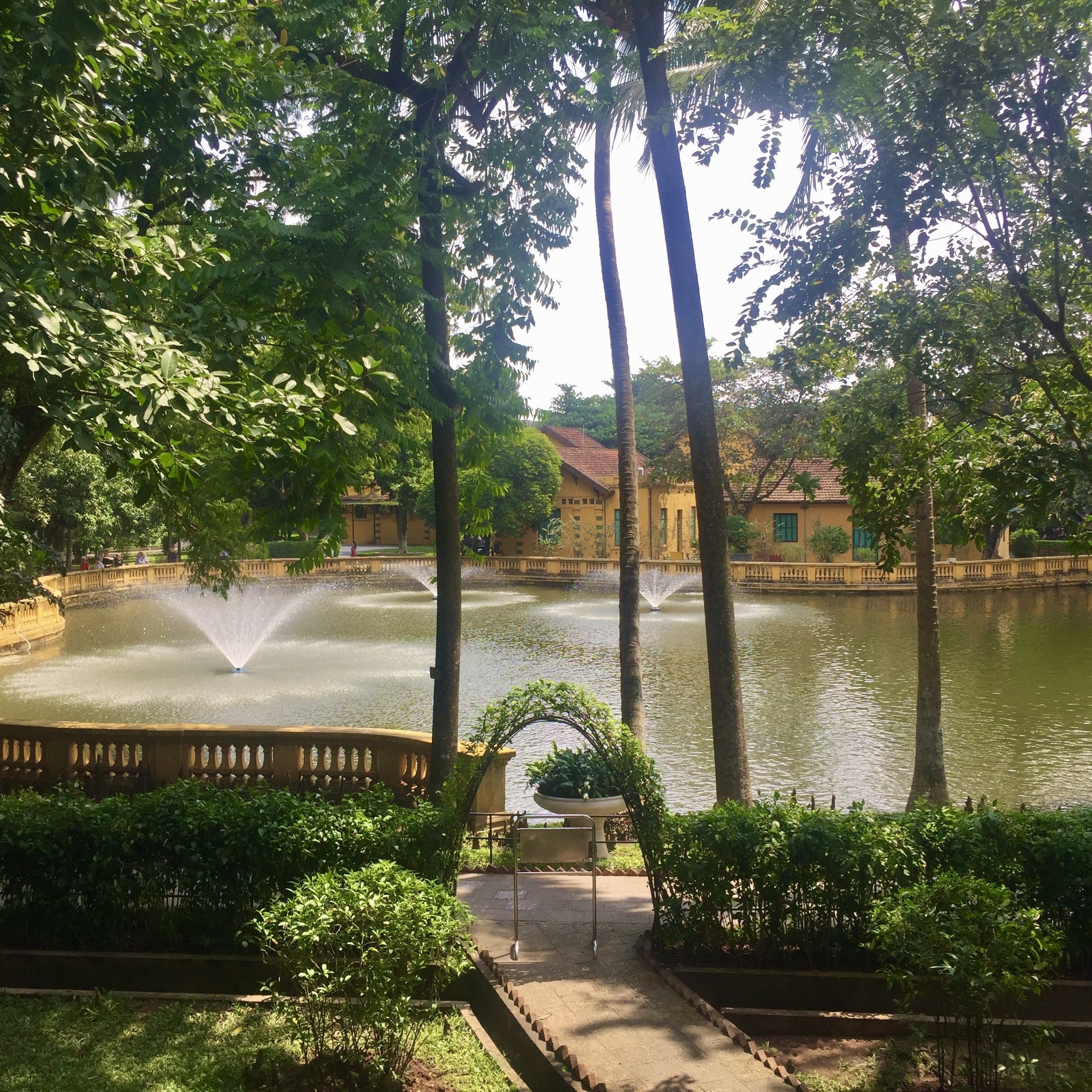 The view from the Palace Gardens
The view from the Palace Gardens
The palace gardens are beautifully landscaped and feature a variety of plants, flowers, and trees. Visitors can stroll through the gardens and admire the serene surroundings, including ponds, lawns, and sculptures.
7.3 What Is House 54?
House 54 is a small building within the Presidential Palace Historical Site that served as Ho Chi Minh’s residence and office from 1954 to 1958. It offers a glimpse into his modest lifestyle and working habits.
7.4 What Artifacts Are Displayed in the Palace?
The palace displays a range of artifacts related to Ho Chi Minh’s life and political activities. These include furniture, personal belongings, and historical documents that offer insights into his leadership and vision for Vietnam.
8. Nearby Attractions to the Ho Chi Minh Mausoleum Complex
When visiting the Ho Chi Minh Mausoleum Complex, there are several nearby attractions that you can easily combine into your itinerary for a more enriching experience.
8.1 What Is the Imperial Citadel of Thang Long?
The Imperial Citadel of Thang Long, a UNESCO World Heritage Site, is a historic complex that served as the political center of Vietnam for over a thousand years. Explore ancient palaces, gates, and archaeological sites that showcase Vietnam’s rich history and cultural heritage. The site is an amazing place to take photos and learn about the traditions of the Vietnamese.
8.2 How Far Is the Temple of Literature?
The Temple of Literature, Vietnam’s first university, is located a short distance from the Ho Chi Minh Mausoleum Complex. Visit this Confucian temple to admire its traditional architecture, serene courtyards, and ancient stelae that honor Vietnam’s scholars.
8.3 What Is the Old Quarter Known For?
The Old Quarter of Hanoi is a bustling commercial and cultural hub known for its narrow streets, traditional shops, and vibrant atmosphere. Explore the Old Quarter to shop for souvenirs, sample street food, and experience the unique charm of Hanoi’s historic district.
8.4 What Are Some Other Museums in the Area?
Hanoi is home to numerous museums that showcase Vietnam’s history, art, and culture. Consider visiting the Vietnam National Museum of Fine Arts, the Vietnam Museum of Ethnology, or the Ho Chi Minh Trail Museum to further enrich your understanding of the country.
9. How to Plan Your Visit to the Ho Chi Minh Mausoleum Complex
Planning your visit to the Ho Chi Minh Mausoleum Complex requires considering several factors to ensure a smooth and memorable experience.
9.1 What Is the Best Time of Year to Visit Hanoi?
The best time to visit Hanoi is during the autumn months (September to November) or the spring months (March to April). During these periods, the weather is mild and pleasant, making it ideal for exploring the city’s attractions, including the Ho Chi Minh Mausoleum Complex. Avoid visiting during the hot and humid summer months (May to August) or the cold and rainy winter months (December to February).
9.2 How Much Time Should You Allocate for the Visit?
Allocate at least half a day to visit the Ho Chi Minh Mausoleum Complex, allowing ample time to explore the mausoleum, museum, stilt house, One Pillar Pagoda, and surrounding grounds. Depending on your level of interest and the size of the crowds, you may want to allocate more time to fully appreciate the historical and cultural significance of the site.
9.3 Are Guided Tours Available?
Yes, guided tours are available at the Ho Chi Minh Mausoleum Complex. These tours provide valuable insights into the history, culture, and significance of the site, led by knowledgeable guides who can answer your questions and enhance your experience. You can book a guided tour in advance or inquire at the entrance for availability. SIXT.VN can also assist you with arranging a guided tour to ensure a comprehensive and informative visit.
9.4 Where Can You Find Accommodation Near the Complex?
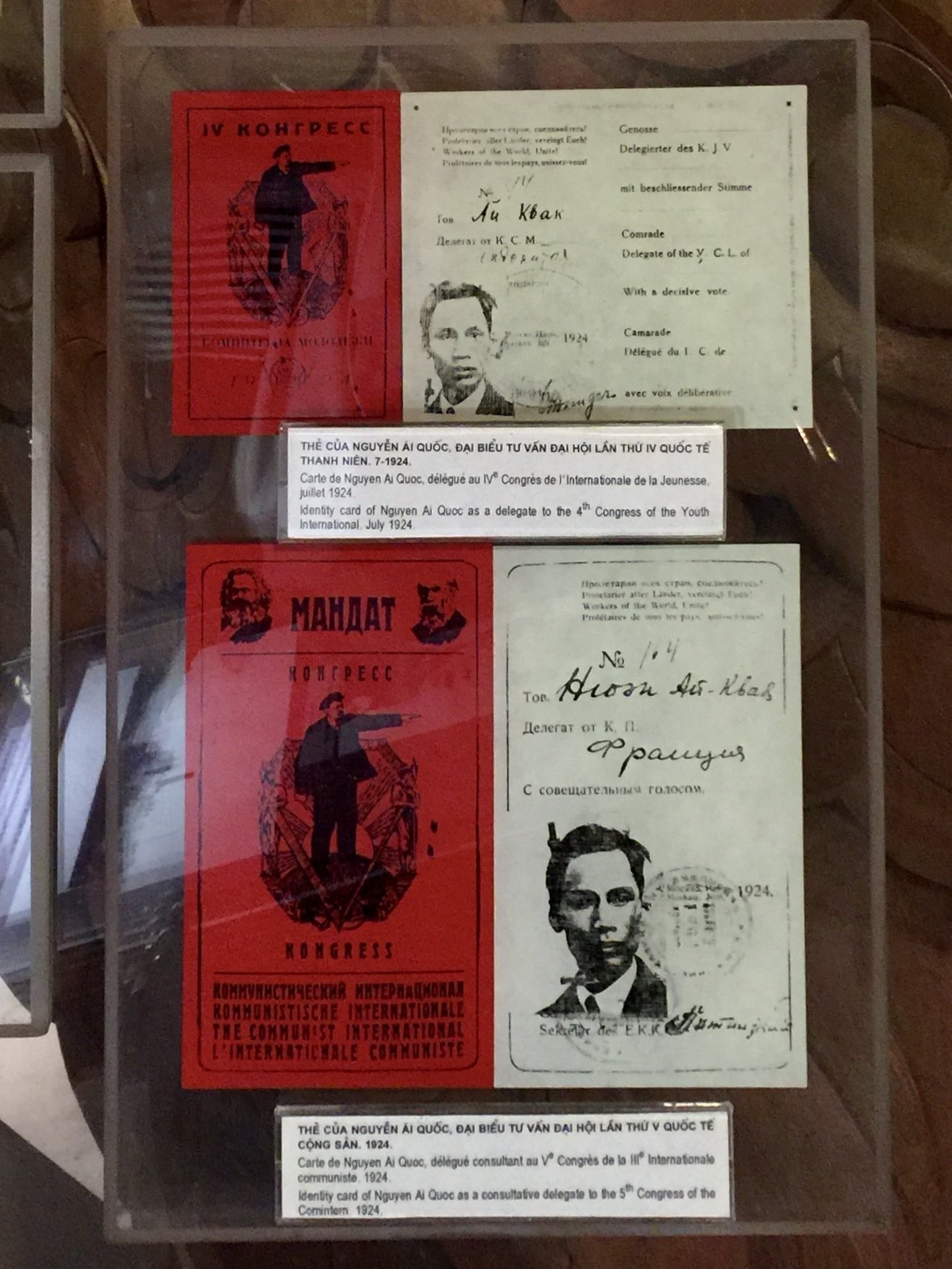 Luxurious accommodation near Ho Chi Minh Mausoleum complex
Luxurious accommodation near Ho Chi Minh Mausoleum complex
There are numerous accommodation options near the Ho Chi Minh Mausoleum Complex, ranging from budget-friendly hostels to luxurious hotels. The Old Quarter and Ba Dinh district are popular areas to stay, offering convenient access to the complex and other attractions in Hanoi. Consider booking your accommodation in advance, especially during peak tourist season, to ensure availability and the best rates. SIXT.VN can help you find and book the perfect accommodation to suit your needs and budget.
10. Booking Your Trip to Hanoi with SIXT.VN
Planning a trip to Hanoi and exploring the Ho Chi Minh Mausoleum Complex can be an enriching experience. SIXT.VN offers a range of services to make your trip seamless and memorable.
10.1 What Services Does SIXT.VN Provide?
SIXT.VN provides a variety of services to enhance your travel experience in Hanoi and throughout Vietnam:
10.1.1 Airport Transfers
Enjoy a hassle-free arrival and departure with our reliable airport transfer services. A professional driver will greet you at the airport and transport you to your hotel or other destination in comfort and style.
10.1.2 Hotel Bookings
Find the perfect accommodation to suit your needs and budget with our extensive selection of hotels in Hanoi and beyond. Whether you’re looking for a budget-friendly hostel or a luxurious resort, we have options to cater to every traveler.
10.1.3 Tour Packages
Discover the best of Hanoi and Vietnam with our curated tour packages. Explore iconic landmarks, cultural sites, and natural wonders with expert guides and comfortable transportation.
10.1.4 Flight Bookings
Book your flights to Hanoi with ease through our user-friendly platform. We offer competitive prices and a wide range of flight options to suit your travel dates and preferences.
10.1.5 Travel Consulting
Our experienced travel consultants are available to assist you with planning your trip to Hanoi. Whether you need advice on the best time to visit, recommendations for attractions, or assistance with visa requirements, we’re here to help.
10.2 How Can SIXT.VN Help Plan Your Trip?
SIXT.VN simplifies the process of planning your trip to Hanoi by providing a one-stop platform for all your travel needs. From booking flights and hotels to arranging airport transfers and guided tours, we take care of the details so you can focus on enjoying your trip. Our user-friendly website and mobile app make it easy to browse and book services, and our dedicated customer support team is available to assist you with any questions or concerns.
10.3 Why Choose SIXT.VN for Your Travel Needs?
Choosing SIXT.VN for your travel needs offers several advantages:
10.3.1 Convenience
We provide a comprehensive range of services in one place, saving you time and effort in planning your trip.
10.3.2 Reliability
We partner with trusted providers to ensure high-quality services and a seamless travel experience.
10.3.3 Competitive Prices
We offer competitive prices on flights, hotels, tours, and other services, helping you save money on your trip.
10.3.4 Expert Advice
Our experienced travel consultants are available to provide expert advice and personalized recommendations to help you plan the perfect trip.
10.4 How to Book Services with SIXT.VN?
Booking services with SIXT.VN is easy and straightforward:
- Visit our website at SIXT.VN or download our mobile app.
- Browse our selection of flights, hotels, tours, and other services.
- Select the services that meet your needs and preferences.
- Enter your travel dates and other required information.
- Review your booking and confirm your payment details.
- Receive instant confirmation of your booking and travel itinerary.
FAQ: Your Questions About the Ho Chi Minh Mausoleum Complex Answered
1. Is it respectful to visit Ho Chi Minh Mausoleum?
Yes, it is respectful to visit the Ho Chi Minh Mausoleum as long as you adhere to the dress code and behavioral guidelines.
2. What should I wear to Ho Chi Minh Mausoleum?
Dress modestly, covering shoulders and knees. Avoid shorts, sleeveless tops, and revealing clothing.
3. Can you take pictures in Ho Chi Minh Mausoleum?
No, photography and videography are strictly prohibited inside the mausoleum.
4. How long does it take to visit Ho Chi Minh Mausoleum?
The visit itself takes about 30 minutes to an hour, but factor in waiting time, which can be lengthy.
5. Is there an entrance fee to Ho Chi Minh Mausoleum?
No, entrance to the mausoleum is free, but there is a fee to enter the Ho Chi Minh Museum.
6. What are the opening hours of the mausoleum?
Generally, 8:00 AM to 11:00 AM on mornings from Tuesday to Thursday and Saturdays and Sundays.
7. Can I visit the Stilt House?
Yes, you can visit the Stilt House, which is part of the Presidential Palace Historical Site.
8. Why is the One Pillar Pagoda famous?
It is famous for its unique architecture and cultural significance, symbolizing purity and enlightenment.
9. Are there any other attractions near the complex?
Yes, nearby attractions include the Imperial Citadel of Thang Long, the Temple of Literature, and the Old Quarter.
10. How can SIXT.VN help me plan my visit?
SIXT.VN provides airport transfers, hotel bookings, tour packages, flight bookings, and travel consulting services to make your trip seamless and memorable.
Ready to explore the Ho Chi Minh Mausoleum Complex and discover the treasures of Hanoi? Let SIXT.VN take care of your travel needs. Contact us today to book your flights, hotels, tours, and more.
Address: 260 Cau Giay, Hanoi, Vietnam
Hotline/Whatsapp: +84 986 244 358
Website: SIXT.VN



